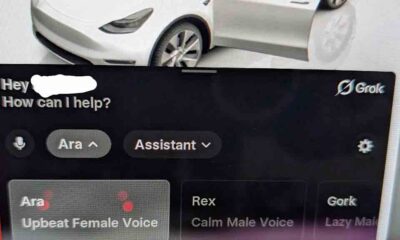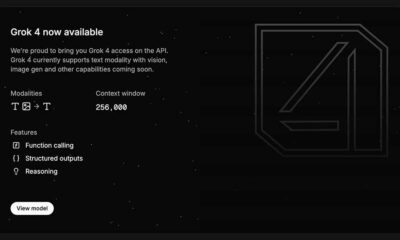Tesla
Patent reveals Tesla wireless charging technology, is it for Robotaxi?

Tesla has filed new wireless charging patents with the World Intellectual Property Office (WIPO) for wireless technology. These consist of different wireless charging components and applications.
These patents were filed on February 27, 2024, and published on September 6, 2024. Below you can check the title and descriptions of these four patents.
Temperature Sensors And Applications In Wireless Charging
ome embodiments of the present disclosure relate to systems and methods that utilize bimetallic thermocouples embedded in a printed circuit board (PCB) for sensing temperature. In some embodiments, a PCB includes a thermocouple embedded in the PCB. The thermocouple comprises a first metallic trace and a second metallic trace.
The thermocouple is configured to generate a voltage indicative of the temperature associated with the PCB. In some embodiments, thermocouples or thermistors are utilized by a wireless charging pad to sense temperature.
Shorting Switch To Reduce Ground Leakage Current In Inductive Charging
The present disclosure relates to a bidirectional shorting switch that can be used to short a resonant tank to reduce leakage current associated with a wireless charging pad configured for wireless power transfer. In some embodiments, the wireless charging pad includes a resonant tank and a bidirectional switch. The resonant tank has a first tank terminal and a second tank terminal, and the resonant tank includes a coil.
The bidirectional switch has a first switch terminal and a second switch terminal. The first switch terminal is connected to the first tank terminal, and the second switch terminal is connected to the second tank terminal. The bidirectional switch is configured to cause a common mode voltage across the coil to be reduced.
Wireless Charging Circuit Topology And Related Methods Of Manufacturing
The present disclosure relates to vehicle pads and methods for manufacturing vehicle pads. In some embodiments, a method of manufacturing includes configuring a set of converter components positioned on a printed circuit board (PCB) of a first vehicle pad. After manufacturing, the first vehicle pad is configured to wirelessly receive power for charging a first battery pack.
Parameter Estimation For Wireless Charging
The present disclosure relates to systems and methods for estimating one or more parameters associated with a converter to configure wireless charging settings for a wireless charging system.
In some embodiments, a method includes: perturbing a first coil that is inductively coupled with a second coil; estimating one or more circuit parameters of a converter that comprises the first coil and the second coil based on the perturbing; and configuring one or more wireless charging settings of a wireless charging system based on the one or more circuit parameters, where the wireless charging system is configured to charge a battery pack of a vehicle based on the wireless transfer of power between the first coil and the second coil.
Confirmation
In December, Franz von Holzhausen, Chief Designer, and Lars Moravy, the VP of Vehicle Engineering at Tesla commented that the company is developing inductive charging.
“Oh, we’re working on the inductive charging, so you don’t need to plug something in at that point. You just pull in your garage, drive over the pad, and you’re charging” said the VP.
However, these officials didn’t say anything about a potential unveiling of this technology.
However, the EV maker has an unveiling pending for Robotaxi. The company could use this to charge the taxi fleet without a connector.
Tesla will unveil Robotaxi at the October 10 event and find out whether Tesla actually has near-term plans to bring wireless charging to the public.
(Source)










